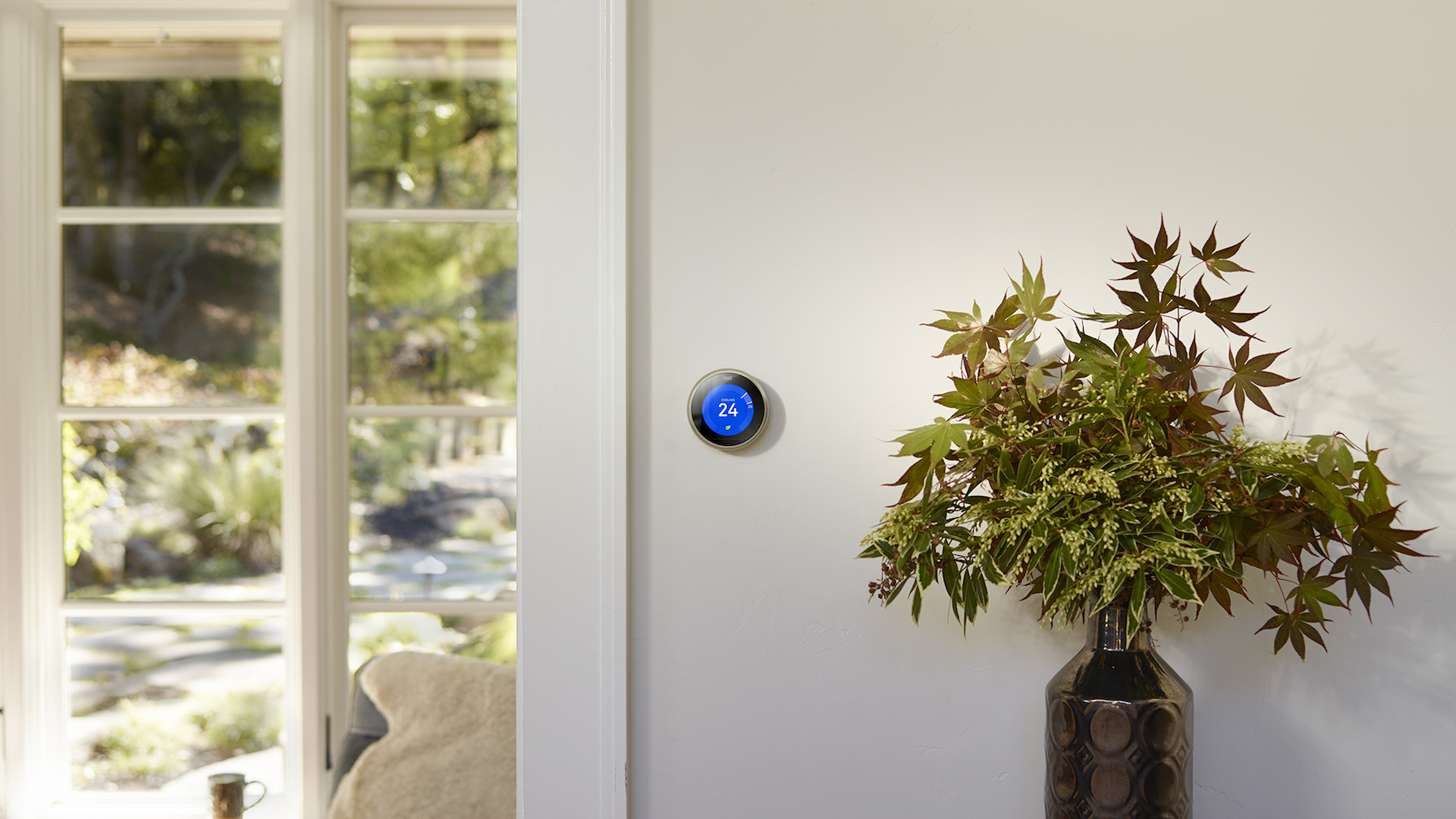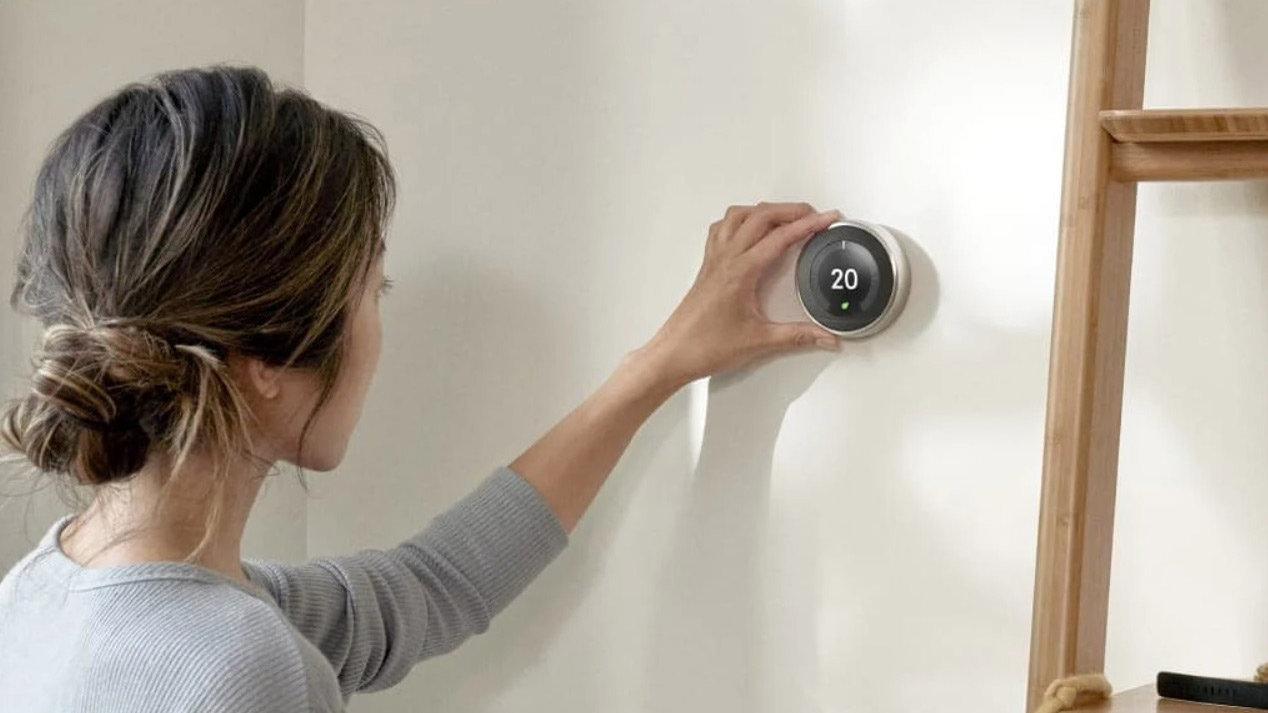Nest Thermostat vs Nest Learning Thermostat: which connected thermostat should you choose?
Are the extra smarts worth the additional cost when it comes to Google’s connect thermostat?

Smart thermostats aren’t just convenient ways to control the heating and cooling of your home without having to get up from the sofa. They can also help save you money by intelligently adjusting your HVAC (heating, ventilation and air conditioning) system to work more efficiently and potentially lower your energy bills.
Nest, a smart home brand owned by Alphabet, the parent of Google, is one of the biggest names in the smart thermostat market. There are currently three models of smart thermostat produced by Nest, but they aren’t all available in every market. In the US you’ll find the Nest Learning Thermostat - the brand’s first and most iconic smart thermostat, along with the newest model, simply called the Nest Thermostat.
However, the UK has the Nest Learning Thermostat and the cheaper, simpler Nest Thermostat E, which was originally on sale in the US but was replaced by the Nest Thermostat in 2020. Unfortunately, there aren’t any Nest Thermostat models that are currently available in Australia.
On the surface, the Nest Learning Thermostat and the Nest Thermostat seem pretty similar - they both let you adjust the temperature of your home from your smartphone, even if you’re not close by. Given the Nest Learning Thermostat is almost twice the price of the Nest Thermostat, you may be wondering just how these two smart thermostats differ?

Best Nest Thermostat and Nest Learning Thermostat deals
Read on to find out just how these smart thermostats compare – or, if you know which Google Nest heating system you want, check out the best prices right now for both products below:
Price
Firstly there is the price – and this should give a clue as to which is the more premium and more capable of the two. Now in its third generation (but with aesthetics that have never really changed), the Nest Learning Thermostat is $249 / £219, while the newer Nest Thermostat, which arrived in late-2020, is $129.99 (around £95).
The Nest Thermostat E, which as we’ve already mentioned is only available in the UK, costs £199 (around $270).
Get daily insight, inspiration and deals in your inbox
Sign up for breaking news, reviews, opinion, top tech deals, and more.
The Nest Learning Thermostat is similarly priced to rival Ecobee’s top-of-the-range model, the Ecobee4 Smart Thermostat, which will set you back $249 (around £185), while the entry-level Ecobee Lite model is $179 (£130).

Design
Both thermostats are the same size, with a 3.3-inch diameter, but they look quite different. The Learning Thermostat has a high-resolution digital display for showing the temperature, status of your heating, and the menu system, which is navigated by rotating and pressing a metal ring that runs around the entire circumference. Meanwhile, the cheaper Nest Thermostat is made from plastic and has what Nest calls a mirror display, which is reflective when off and white when on.
Both are offered in a range of colours. For the Learning Thermostat this simply means the metal ring is available in seven colours: stainless steel, mirror black, brass, polished steel, white, black and copper. The newer Nest Thermostat is the more design-focused on the two, with the four colour options of snow, sand, fog and charcoal spread across the ring and the entire front panel, including the display. Both thermostats are controlled by rotating the ring to adjust temperature and clicking it to enter the Nest menu system.
The display of the Learning Thermostat has a feature called Farsight, which senses your presence and turns the screen on, conveniently showing the current and target temperature (or the local weather) when you walk by.
The Learning Thermostat comes with a trim plate included in the box. This is often needed if the Nest is smaller than the thermostat it is replacing and is used to hide the hole left by the old device. Nest’s marketing images usually show the thermostat neatly mounted directly to the wall, but in most cases, you’ll have to use the trim kit to hide the mess created by the removal of the old thermostat.
The Nest Thermostat often needs this too but doesn’t come with a trim kit in the box. Instead, Nest sells trim kits in four different colours (to match the thermostat itself) for $14.99 (around £11) each.
Lastly, the Nest Learning Thermostat is claimed to work with 95% of 24V heating and cooling systems, while the Nest Thermostat is compatible with 85% of systems. With regard to the cheaper thermostat, Nest told TechRadar “Some systems require a C wire or other compatible power accessory.” You can check compatibility for the Nest Thermostat and Nest Learning Thermostat here and here respectively.
Technically, both thermostats can be installed without the need for a professional. But we urge readers to check what’s required with swapping the thermostat of your specific HVAC system, and consider professional installation if you aren’t comfortable doing it yourself. Nest offers installation for $99 (around £72) for the first device then $59 (around £43) for each subsequent device, or you can book your own professional elsewhere.

Features
Nest claims both thermostats can save an average of 10 to 12 percent on heating bills and 15 percent on cooling bills. Naturally, this will depend on your home, typical usage, and the HVAC system you have.
Both models of smart thermostat automatically turn down when you leave home, based on the location of your smartphone, and they can be controlled from anywhere via the Google Home app.
But there are two major differences. The first is in the name of the Nest Learning Thermostat – it learns your temperature preferences, then starts to make small changes automatically in a bid to keep you comfortable, but while using less energy. This could mean lowering the heating by a degree, or running the air conditioning slightly less often; both of these could go unnoticed, but will consume less energy and lower your bills.
The cheaper Nest Thermostat does not do this, and instead relies on you creating a schedule for it to follow, or adjusting the temperature manually.
Secondly, the Nest Thermostat lacks compatibility with the $39 (around £29)Nest Temperature Sensor. Exclusive to the Learning Thermostat (and Thermostat E in other markets), this is a wireless sensor that can be placed anywhere in the home, and the data it collects is fed back to the thermostat.
Thermostats are often placed in a cool part of the home, such as the hallway. This can cause the heating to come on more frequently than is required in warmer rooms like the kitchen. Place a temperature sensor in the kitchen, for example, and the thermostat will know not to come on when the room is already warm from your evening cooking.
Or, put a sensor in the bedroom and tell the thermostat to prioritize that room, keeping it warm (or cool) regardless of the temperature where the thermostat is installed.
Up to six temperature sensors can be connected to the third-generation Nest Learning Thermostat, and up to 18 sensors connected to three thermostats can be supported in one home. These, and the thermostat, are all controlled via the Google Home app, the Nest app, and with voice commands spoken to the Google Assistant.
Verdict
Which smart Nest thermostat is right for you? A lot of this will come down to cost and whether you believe the extra features of the Nest Learning Thermostat are worth the $120 difference in price.
It is also worth bearing in mind that one of those features, compatibility with Nest Temperature Sensors, will require the extra expense of buying at least one of those $39 sensors.
You might not instantly see an equivalent saving in your heating and cooling bills to offset the extra expense of the Learning Thermostat and sensors, but its additional features – especially its intelligent temperature adjustments – can make a difference to your bills over time. Using less energy can also make a difference to the environmental impact of your home, depending on the energy source used.
But that $120 difference is significant, and some smart home owners will prefer the look of the Nest Thermostat, with its more muted color options and simpler display.
- Check out these great Nest thermostat deals.
Alistair Charlton is based in London and has worked as a freelance technology and automotive journalist for over a decade. A lifelong tech enthusiast, Alistair has written extensively about dash cams and robotic vacuum cleaners for TechRadar, among other products. As well as TechRadar, he also writes for Wired, T3, Forbes, The Independent, Digital Camera World and Grand Designs Magazine, among others.
